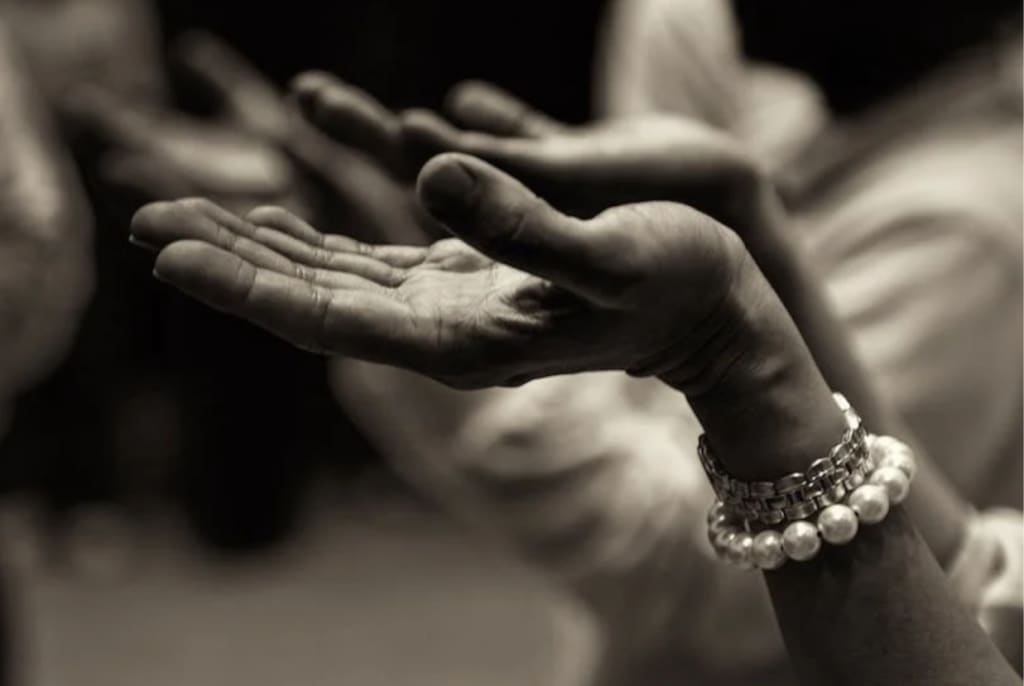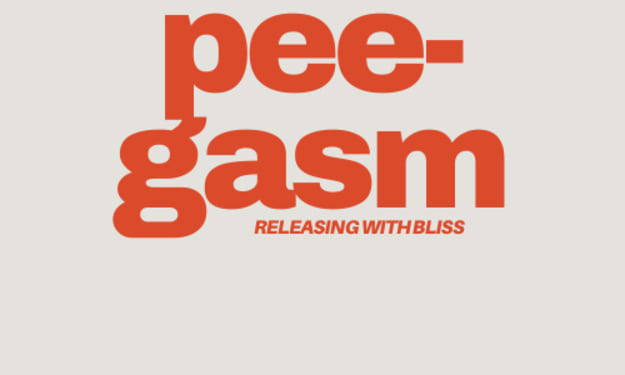Atwood’s Portrayal of Religion in Gilead
‘All around us we see evidence of the way in which belief is institutionalised and abused’, Atwood’s portrayal of Religion in ‘The Handmaid’s Tale’.

Margaret Atwood uses biblical roots to create a religious motif throughout the novel, such biblical references enunciate Gilead’s strict Christian Puritan views. Gilead uses religion to manipulate its inhabitants into believing that the practices that occur in the state are all extracted from the Bible. Therefore, Atwood portrays religion as a form of control over the Gileadean citizens. Religion is a crucial part of everyday life in Gilead, Karl Marx called religion “the opiate of the masses,” Gilead is a religious state in which state and religion are intertwined - making Gilead a theocracy - and are considered the same; its official vocabulary include religious terminology and biblical references. Domestic servants are called “Marthas” in reference to a domestic character in the New Testament in the Bible. The local police are “Guardians of the Faith”; Soldiers are “Angels”; and the Commanders are officially “Commanders of the Faithful.” All the stores have biblical names too: Loaves and Fishes, All Flesh, Milk and Honey. Even the automobiles have biblical names like Behemoth, Whirlwind, and Chariot. Using religious terminology to describe people, ranks, and businesses whitewashes political skullduggery in pious language. It provides an ever-present reminder that the founders of Gilead insist they act on the authority of the Bible itself. Politics and religion are the same in Gilead, where the slogan “God is a National Resource” predominates. The Bourgeoisie (Commanders) use religion to justify their own acts and reap the result. Religion is a tool to manipulate the other lower-ranking classes. The significance of the Gileadean police being labelled the “Guardians of the Faith” is that the Gileadean Institution expects the civilians to have utmost respect for the Police, even though they are simply just men who will not hesitate to shoot a Handmaid for the slightest act of deviance - further emphasising Gilead’s lack of morality toward the lives of women and such actions also exploit Gilead for not always perusing the Puritan values they preach. Similarly could be interpreted from the official names of the Commanders and Soldiers; “Commanders of the Faithful” and "Angels”. Both names suggest pure men with correct Christian values, whereas in reality, they exploit women and murder frequently - the opposite of what the Bible states. The importance of the store names originating from the Bible highlights the complete control Gildead holds over its populace with the use of Christian implications. So, with the constant use of Bible references, Gilead will always have an excuse to punish citizens severely for even the smallest deviances - by stating they are going against the Bible. Therefore, by “abusing” the belief in religion, Gilead is able to maintain complete control over its populace with the use of fear of punishment.
A motif in Atwood’s style of writing in this novel is ambiguity; which is the language technique she purposely includes in the novel to imply that something could have multiple meanings. One of the most significant examples of this is through the “Red Centre''. The Red Centre is where the Aunts train new Handmaids to follow Gileadean Law; to develop their new role in society. The colour “Red” in the name could symbolise the uniform of the Handmaids, which also has connotations of the stereotypical Scarlet Woman (a visual image of an impure, lustful woman). However, Atwood gives the Centre another name, the official name set by Gilead, which is “The Rachel and Leah Centre”. Another example of the abuse of the belief in religion is portrayed through this name as the biblical story of the two sisters is linked to the Handmaid’s role in Gileadean society. The biblical roots of the Rachel and Leah story is based around two sisters who shared a husband. Rachel was jealous of her sister, Leah, as she could not conceive children, but deeply wanted a child, so she offered her Handmaiden (Handmaid) to her husband so he could get her pregnant, resulting in the Handmaiden being a surrogate for the infertile sister. This biblically originated story directly links to the role in society Handmaids are forced to accept and live by - the Handmaids act as a surrogate for the infertile Wives through constitutionalised rape once a month, called “The Ceremony”. The Ceremony is the ritual in which a Handmaid must lie face-up on her Commander's Wife and grasp the wife’s hands while the Commander has sex with her. Further evidence of Atwood’s deliberate link between the biblical story and the Handmaid’s role is evident as Atwood imbedded the story in the novel’s epigraph, in the epigraph she includes the quotation “And when Rachel saw that she bare Jacob no children, Rachel envied her sister; and said unto Jacob, Give me children, or else I die. And when Jacob’s anger was kindled against Rachel: and he said, Am i God’s stead, who hath withheld from the fruit of the womb? And she said, behold my maid Bilhah, go in unto her; and she shall bear upon my knees that I may also have children by her. And she gave Bilhah her Handmaid to wife: and Jacob went in unto her. And Bilhah conceived, and bare Jacob a son.” Genesis 30:1-5. The significance of the Racheal and Leah Centre’s name is to suggest to the civilians of Gilead, specifically the Handmaids, that the surrogacy and the constitutionalised rape is accepted by God as it is in the Bible, and so, they should not go against their duty as they would also be going against God - which was punishable by death in Gilead. Therefore, Atwood portrays belief in The Handmaid’s Tale as a weakness to have Puritan Christian beliefs, as the result would be succumbing to Gilead’s incorrect interpretations of the Bible and being completely manipulated to support the Gileadean institution.
Atwood ultimately portrays the theme of religion in The Handmaid’s Tale as a justification Gilead gives for its subordination of women and religious minorities. Gilead claims that every practice they participate in is centred around the Puritan Christian religion and is accepted by God. However, this could be interpreted by the readers as an excuse by the institution. We can infer this through The Commander when he speaks to Offred during a secret meeting, The Commander states “The problem wasn't only with the women, he says. The main problem is with the men. There was nothing for them anymore… I’m not talking about sex, he says. That was part of it, the sex was too easy… You know what they were complaining about the most? Inability to feel. Men were turning off on sex, even. They were turning off on marriage. Do they feel now? I say. Yes, he says, looking at me. They do.” This quotation, from the end of Chapter 32, recounts the Commander’s attempt to explain to Offred the reasons behind the foundation of Gilead. His comments are ambiguous, perhaps deliberately so, but they are the closest thing to a justification for the horror of Gilead that any character offers. He suggests that feminism and the equality revolution left men without a purpose in life. With their former roles as women’s protectors taken away, and with women suddenly behaving as equals, men weren’t adrift. At the same time, changing sexual mores meant that sex became so easy to obtain that it lost meaning, creating what the Commander calls an “inability to feel.” By making themselves soldiers, providers, and caretakers of society again, men have meaning restored to their lives. This sounds almost noble to the reader, except that in order to give meaning to men’s lives, both men and women have lost all freedom. The reader may feel as though the benefits of the new world are not worth the cost in human misery. The reader can infer that religion is simply an excuse for the subordination Gilead exercises as The Commander seems to say too much to Offred about the founding of Gilead, seen when he states “the main problem is with the men” suggesting that the creation of Gilead was formed and built around male ‘needs’, instead of ‘true Puritan Christian Values’. Summarised, the reader would be astounded by the lengths Gilead went through to promote religion, only to use it as a disguise for their real motive, to make men “feel” again. Therefore, Atwood portrays religion as a justification for Gilead’s subordination, and a ploy to hide the ultimate motive of the totalitarian institution.
About the Creator
G.A.L. Grace
I began writing at 12, but struggled to gain positive results from my work. I joined vocal with the hope that my writing may mean something to at least one person. My greatest ambition is to become an author; to educate and please others.
Enjoyed the story? Support the Creator.
Subscribe for free to receive all their stories in your feed. You could also pledge your support or give them a one-off tip, letting them know you appreciate their work.






Comments
There are no comments for this story
Be the first to respond and start the conversation.